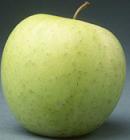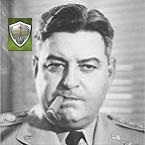Curtis Lemay
Posts: 12969
Joined: 9/17/2004
From: Houston, TX
Status: offline

|
I thought it would be useful to post the entire “Logistics” part of the Nofi article, since it’s so relevant to the discussion. Part of it is only applicable to the Desert War, but much of it has universal application.
”To operate a combat unit needs three primary items of supply: ammunition, fuel and food. A unit would normally carry with it enough of the supplies to last five days (plus a few days extra emergency food in cans). To give a detailed example: a typical German Infantry Division had 12,000 men. It’s “basic load” (five-day supply) weighed 1902 tons. This consisted of fuel (207 tons or 10.4%) for 600 trucks; food (108 tons or 5.2%); fodder (248 tons or 14.9%) for the 4600 horses; and ammunition (1339 tons or 69.5%) for the unit’s 11,300-odd weapons. The main problem is the rate at which the above material is used up. Some elements are quite consistent. Food is consumed at the rate of about three pounds per day per man. That’s 18 tons a day. Fuel for the trucks is a different matter. The five “loads” of fuel carried by each is enough to carry the division’s vehicles 100 kilometers. If the division is just sitting around in reserve one load of fuel would last a week (about 6 tons a day). When moving, the division would consume about one load a day (41 tons). Many of the trucks are used for moving forward supplies, which accounts for such a large gas consumption in a unit that moves at the rate of 30-40 kilometers a day.
If the unit is out of action, it naturally requires no ammunition. But it does require 64 tons of other supplies, plus a few tons of “housekeeping” items (paper, mail, spare parts, etc.). Roughly 70 tons. When in action the situation was, of course, quite different. Ammunition had to come from Europe, a lot of it. And it weighed quite a lot compared to food and fodder.
Ammunition expenditures were also, to a certain extent, quite consistent. But there were considerable variations according to the intensity of action and type of unit (infantry or mobile). For infantry units (non-mobile) ammunition expenditures varied from about 60 tons a day for mopping up, or similar low-level actions, or up to 200-300 tons a day for major offensive or defensive operations. Mobile (motorized) units, in addition to having more men also had more weapons per man and, being mobile, usually had greater opportunity to use them. An armored division might expend up to 400 tons a day. Some 80% of this ammunition was expended by the 105mm and 150mm howitzers of the divisional artillery, even though only about one-third of the division’s basic load of ammunition was artillery ammo. Primarily, this was due to the relative ease with which howitzers (which were behind the fighting line) could be resupplied. Front line units, many of which were under fire and very difficult to supply with anything, carried a larger amount of ammunition. Most of this was for self-defense, for artillery caused most of the enemy casualties (usually around 50-60%). Infantry heavy weapons (mortars and heavy guns) caused another 10-25%, while all other weapons caused the remainder. Rifles and machineguns were not great casualty-producing weapons (although they were very instrumental in pinning down enemy infantry). Most of the ammunition in the army level ammo dumps was for the artillery. These dumps usually contained half the total amount of ammunition carried by the divisions in the army. This ammo was distributed according to the intensity of operations within the army and was an army commander’s chief means of controlling the situation. It was his “ultimate reserve”. The use of artillery required enormous amounts of ammunition in order to be effective. For example, a three-minute barrage (a line of shells forming a barrier) by a 105mm battalion (12 guns) would consume eleven tons of ammunition. The barrage covered 360 meters of front. A three-minute, 600 meter barrage by a 150mm battalion would consume 9.4 tons.
On a higher level, the artillery of an infantry division (36 105mm howitzers and 12 150mm howitzers) would expend, per hour, 45 tons of munitions while covering a deployment. A preparation fire against enemy positions would consume 131 tons per hour. Support the first two hours of an attack would consume 92 tons per hour. Spoiling fire against enemy offensive preparations would consume 104 tons and defensive fires against enemy attacks would take up to 92 tons an hour. These figures are “planning” figures (averages) and vary somewhat according to circumstances. The point of it all is that your chief logistic headache is going to be artillery ammunition.
The most obvious problem encountered in desert fighting was, of course, the heat and absence of water. Casualties in North Africa from heat stroke were far greater than in other theaters of war. Lack of water was always a considerable problem, particularly in as much as many of the wells in the Western Desert supplied unstorable water. Surprisingly, water represents numerous storage problems. It may not just be bottled up and used at a later date. Certain types of wells will supply water which can last indefinitely. Others will be undrinkable in three days. A great many places named on any map of North Africa are not actual places, but merely wells. Water, of course, is useful in combating heat stroke. Water also helps keep a mechanized army moving, but that’s a problem which ties in with fuel supply. Besides, you can use non-potable water in your radiator.
The desert also presents difficult problems for the mechanic. Sand manages to work its way into everything. This increases the wear and tear on equipment necessitating the more frequent replacement of critical parts. Items which have been heavily greased suffer particularly in this fashion. So the supply of spare parts was always a major problem, and a tank had some 8,000 parts made of 30,000 pieces. Needless to say the Axis suffered far more from this than the British, who benefited from seemingly inexhaustible supplies of equipment.
The key problem for the logistician was in the land transshipment of the replacements and material. Rommel needed 60,000 tons of supply per month in 1942. In the last six months of 1942 an average of 56,209 tons of supplies were being unloaded in North Africa per month. But they had to be unloaded in places like Tobruk, over 300 miles behind the Alamein position; or Benghazi, nearly 600 miles in the rear; or even Tripoli, about 1500 miles off. From these ports literally every ounce of material had to be trucked across the length of Africa up to the front. Motor gasoline weighs 6.11 pounds to the gallon, in drums up to 7.41 pounds per gallon. A 2.5 ton tank truck, consumes, in moving 160 kilometers, 20 gallons of gasoline, and 1.6 gallons of petroleum products, without considering additional consumption to wear of the vehicle, desert climate, and combat conditions. Thus, to get 1000 gallons of gasoline from Tobruk to the Alamein position costs 120 gallons of gasoline and 9.6 gallons of other POLs. Then we must figure in an average of 10% for wastage and spillage. Our 1000 gallons now reads 768 and we have yet to send the trucks back, which will cost another 132 gallons! We have still to bring forward a single ounce of ammunition, spare parts, foodstuffs or other POLs, and only 636 gallons have reached the front! And we are operating from Tobruk, not Tripoli! Nor have we calculated in loss due to enemy action!
How did the British solve this problem? They took advantage of a railroad which extended from Alexandria to the vicinity of Alamein and extended it across the Libyan frontier. That Rommel did not activate this line when he captured nearly 300 miles of it in mid-1942 is indicative of his lack of ability as a logistician. Rail transport is more efficient than road; a standard gauge steam locomotive (2-8-0) consumes 55 pounds of coal per kilometer of train being pulled, or about 700 pounds per hour. It can transport, in that kilometer, almost half a million gallons – on paper. Even off paper the record is impressive. Furthermore, railroads are very difficult targets to knock out from the air and usually can be repaired overnight.”
I’d like to highlight a couple of points from this:
1. Note how the supply system was expressly set up to keep the artillery in action. As I’ve been saying all along, the quartermasters are not idiots. They know what the needs are going to be and they plan accordingly. If artillery causes 50-60% of the enemy casualties, it had better be priority #1.
2. In contrast, note that there wasn’t even a whiff of a hint of any priority whatsoever for small arms ammo. If anything, units were expected to almost fend for themselves in that regard while under fire. Their part of the basic ammo load was very disproportionate to their expected expenditures, relative to the artillery. This probably would allow them to get by without much resupply at all, till there was a lull in the action.
So, no wonder artillery can keep firing at 1% in TOAW while within the full supply net. Once you free yourself from the notion that unit supply levels are equivalent to their stockpile levels you can start to recognize that TOAW models reality pretty well. Norm was one smart fellow. There are just some special cases at the extremes where it breaks down. We do need to address them. But, as I said, with a scalpel, not a sledgehammer.
|
 Printable Version
Printable Version










 , which is dead wrong. They did activate that rail line, starting in august 1942.
, which is dead wrong. They did activate that rail line, starting in august 1942.
 New Messages
New Messages No New Messages
No New Messages Hot Topic w/ New Messages
Hot Topic w/ New Messages Hot Topic w/o New Messages
Hot Topic w/o New Messages Locked w/ New Messages
Locked w/ New Messages Locked w/o New Messages
Locked w/o New Messages Post New Thread
Post New Thread